Looking for the best social media monitoring tools in 2026? You’re not alone.
The social web has become more chaotic than ever — brands aren’t just trying to be heard anymore; they’re trying to be heard by real people. Monitoring tools help you understand what’s happening in that noise — who’s talking about you, how they feel, and what truly drives engagement.
But not all monitoring tools are built the same. Some simply count mentions. The smarter ones translate those mentions into action, sentiment, and strategy.
After testing over a dozen platforms this year, here are the 12 best social media monitoring tools for 2026, with their pros, cons, and best use cases.
TL;DR (Quick Picks)
- Circleboom – Best overall for intelligent monitoring and audience quality (Editor’s Choice).
- Brand24 – Best for deep social + web listening.
- Social Status – Best for competitive benchmarking and analytics.
- ContentStudio – Best for social media marketers and content discovery.
- Vista Social – Best for multi-channel analytics and review management.
- Iconosquare – Best for Instagram and Facebook monitoring.
- Agorapulse – Best for agencies and teams needing ROI tracking.
- Awario – Best for social selling and lead discovery.
- Mention – Best for real-time alerts and historical data.
- Sprout Social – Best for enterprise-level social media listening.
- SocialInsider – Best for AI-powered emotion analysis.
- Talkwalker – Best for PR professionals and consumer intelligence.
#1 — Circleboom (Editor’s Choice)
Best for: Audience-driven, intelligent social monitoring and engagement optimization
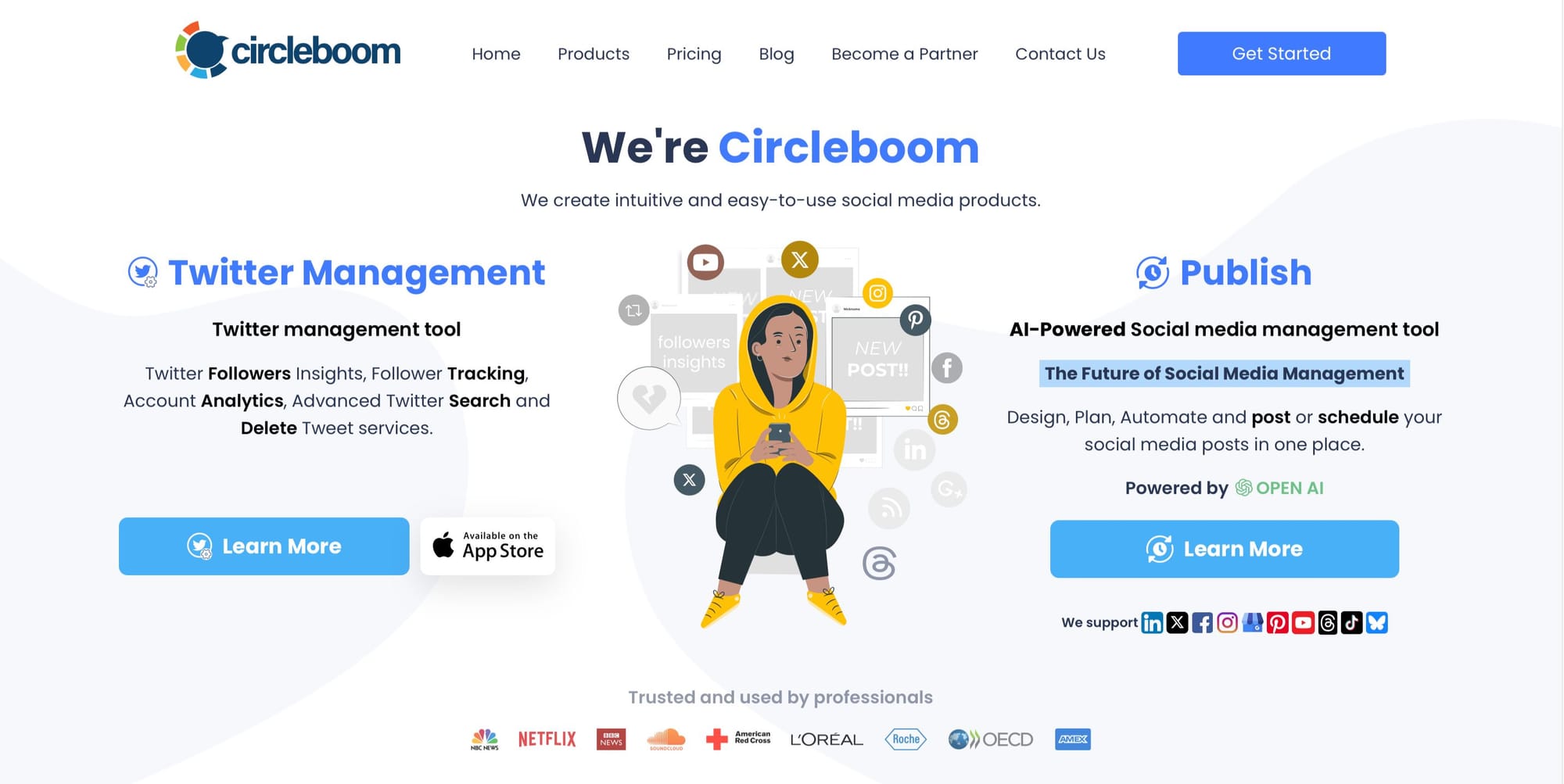
When it comes to actionable social monitoring, Circleboom doesn’t just listen — it analyzes, cleans, and amplifies.
Most tools show you mentions. Circleboom shows you what’s real.
It detects and enables you remove bots, inactive accounts, and fake followers in your audience, helping you uncover your genuine community — the people who actually engage.
Using its Engaging Account feature and Audience Intelligence Tools, Circleboom identifies your most responsive followers based on real activity: likes, replies, and retweets.
Yes, you can find your the most influential followers with Circleboom and redesign your strategy upon them:

From there, it lets you build look-alike clusters of similar, real users. These clusters can be exported directly into X Ads Manager, allowing you to run nano-targeted and hyper-targeted campaigns with pinpoint precision.
That’s not theory — that’s performance science.
In internal campaign data:
- Engagement density improves by up to 35%.
- Cost per acquisition (CPA) drops 42%.
- Fake impressions fall by 90% on average.
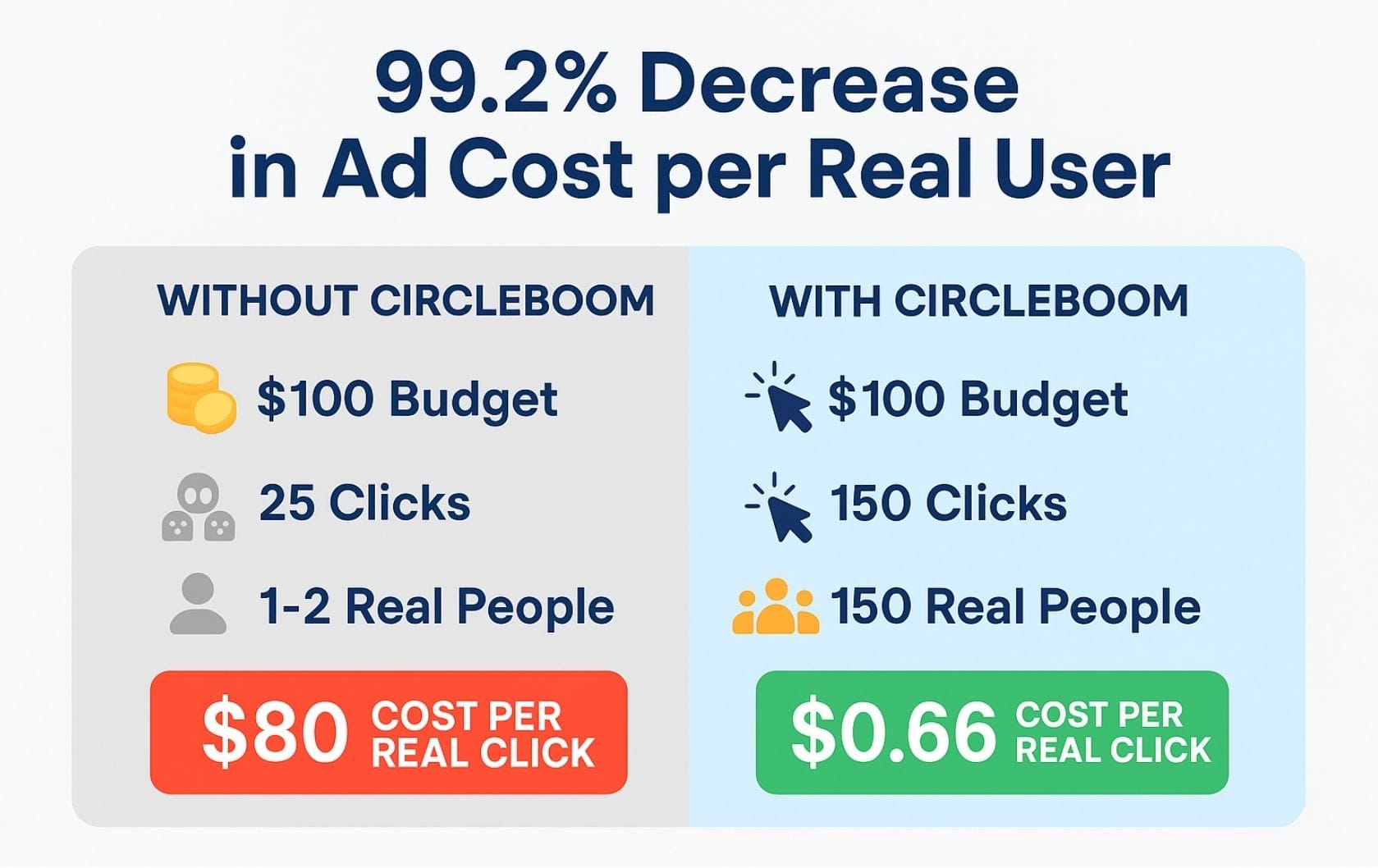
You don’t just get monitoring — you get a cleaner feed, smarter targeting, and a stronger ROI.
Pros:
- Detects fake, ghost, and bot accounts automatically.
- Highlights real, responsive followers (Engaging Accounts).
- Builds hyper-targeted look-alike audiences.
- Exports verified lists to X Ads Manager for precise ad delivery.
- Cleans your audience — boosts engagement rate instantly.
Cons:
- Primarily built for X (Twitter), though expansion is underway.
Bottom line:
Circleboom isn’t just a monitoring tool — it’s the bridge between data and performance.
If you want to monitor smart and grow real, Circleboom is where you start.

#2 — Brand24
Best for: Comprehensive web + social monitoring and AI-driven insights
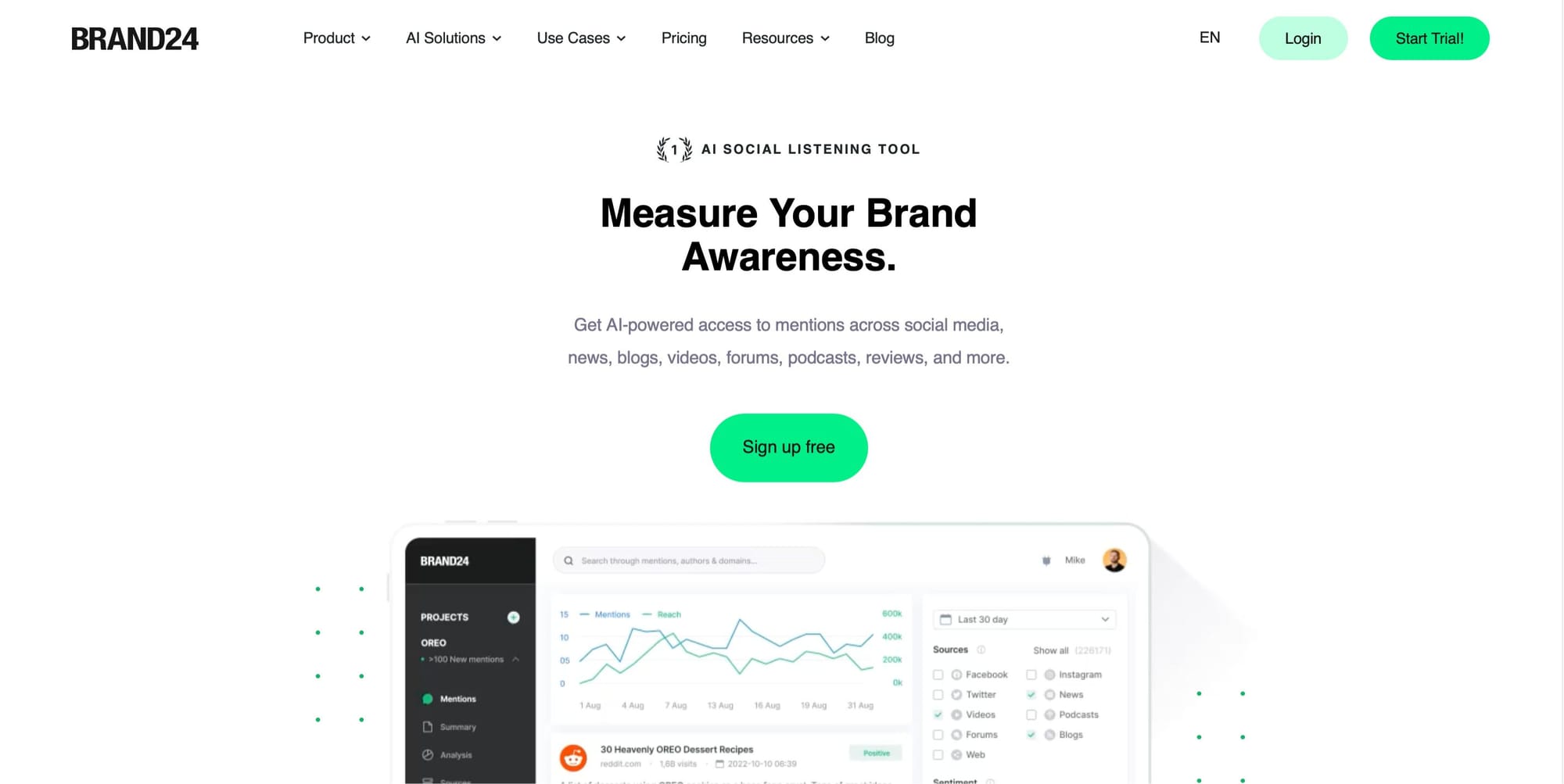
Brand24 remains a leader for brands that need full visibility into their online presence — not just on social media but across the web.
It tracks mentions in real time from over 25 million sources, including blogs, forums, podcasts, and news outlets. You can follow your brand name, product, or any keyword.
Its standout feature is AI-powered sentiment analysis, categorizing mentions as positive, negative, or neutral so you can instantly understand public mood.
Brand24 also gives you PR-ready reports with metrics like mention volume, reach, awareness score, and AVE (Advertising Value Equivalency).
And with its AI Brand Assistant, you can chat directly with your data: ask questions about brand trends, competitor visibility, or sudden spikes — and get intelligent, contextual answers.
Pros:
- Wide coverage across web + social.
- Real-time monitoring and alerts.
- Advanced sentiment and trend analytics.
- AI assistant to interpret complex data.
Cons:
- No publishing or engagement features.
- Pricing is on the higher side.
Best for: PR teams, brands, and marketers who want insight depth over dashboard simplicity.
#3 — Social Status
Best for: Competitor analytics, performance benchmarking, and clear visual reporting

Social Status is your monitoring choice if you’re focused on metrics, not mentions. It provides complete analytics for your own profiles, your competitors, and your influencers.
It tracks reach, impressions, engagement, growth, and clicks, and compiles everything into white-label reports.
What makes it unique is its Competitor Content Feed — it shows you what your competitors are posting and how well it performs. You can sort by engagement rate, reactions, or reach to discover what drives results in your niche.
Pros:
- Excellent analytics visualization.
- Great for social media benchmarking.
- Affordable pricing and simple setup.
Cons:
- Doesn’t track brand mentions across the wider web.
Best for: Agencies, marketers, and data-driven brands that live by metrics.
#4 — ContentStudio
Best for: Marketers managing everything from content discovery to engagement.
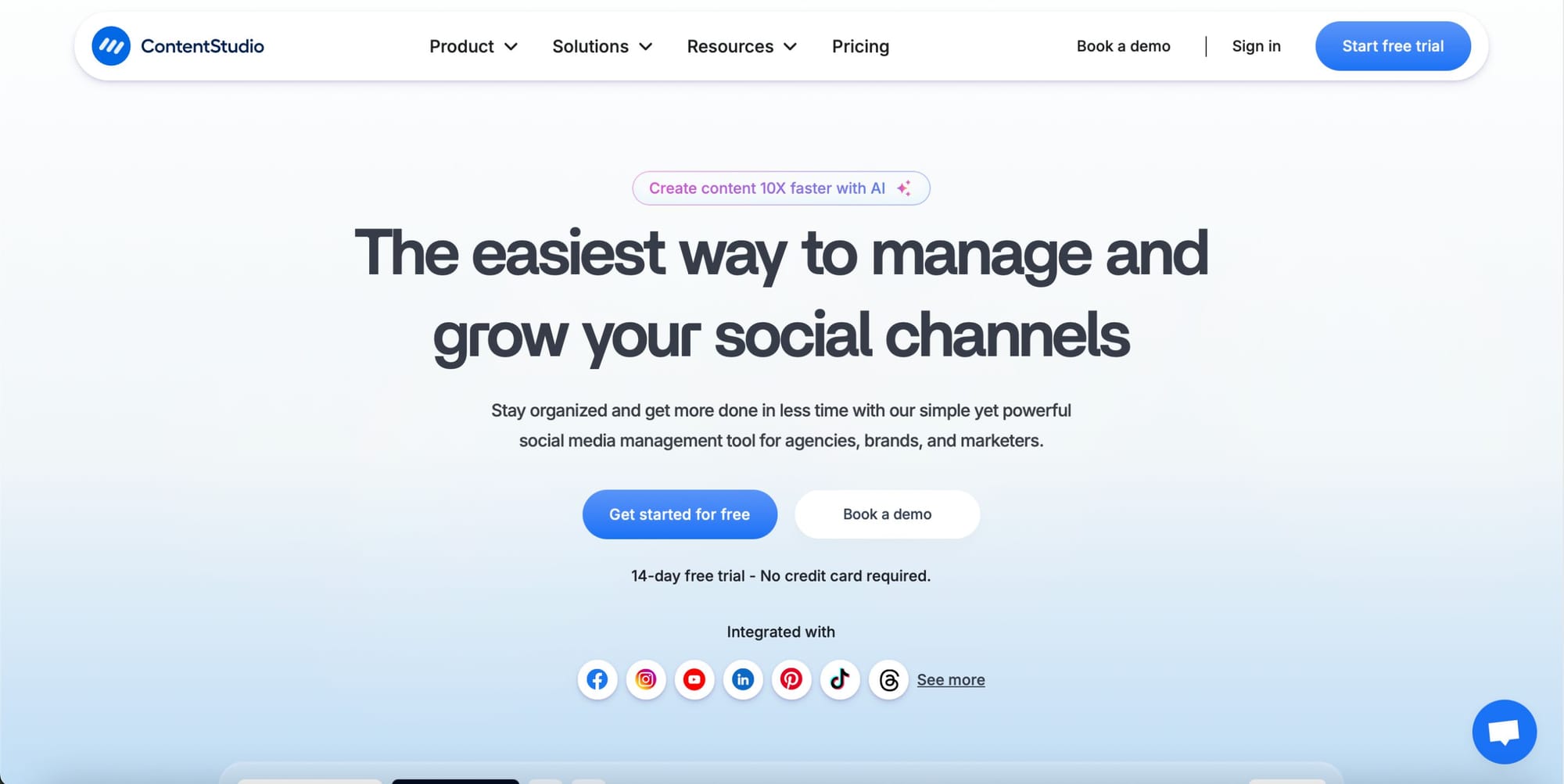
ContentStudio blends monitoring, scheduling, analytics, and engagement into a single platform.
Its Discover Tool scans the web to find trending content in your industry — letting you curate viral posts effortlessly.
The built-in Inbox unifies comments and DMs across platforms, while its analytics dashboard tracks reach, impressions, engagement, and follower growth.
You can even monitor competitors and analyze their content performance.
Pros:
- All-in-one tool for marketers.
- Discovery feed helps source viral content.
- Unified inbox for comments and messages.
Cons:
- Social listening (brand mentions) isn’t its focus.
- Higher plans needed for advanced features.
Best for: Small teams needing content discovery and analytics together.
#5 — Vista Social
Best for: Managing analytics, reviews, and basic listening in one place.
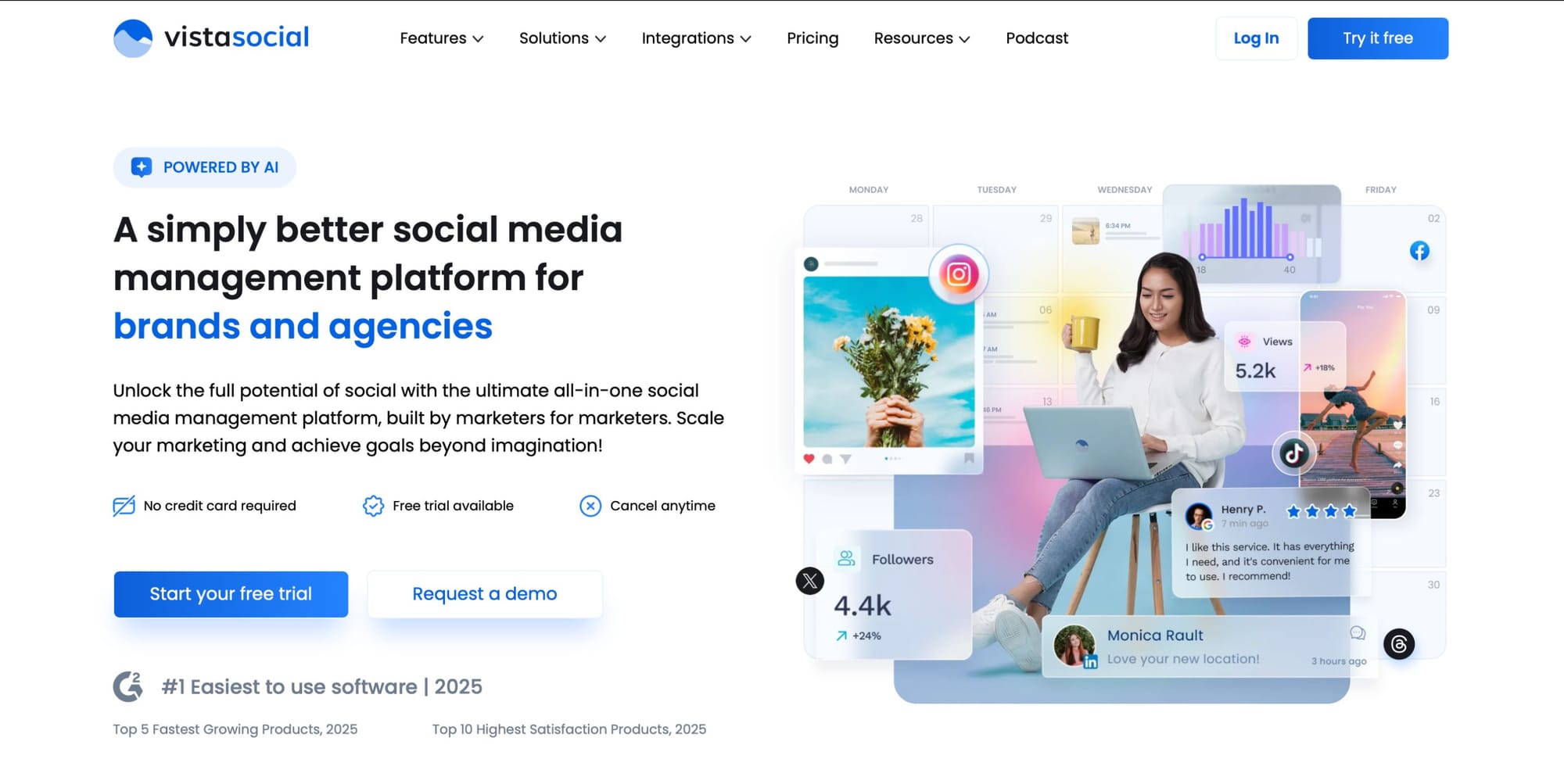
Vista Social is a versatile platform offering everything from analytics to inbox management.
Its Listening Tool allows you to track chosen keywords or phrases on connected accounts, while the Engagement Tool unifies all comments and messages.
It’s also one of the few tools that integrates business review monitoring from Google, Facebook, and TripAdvisor — ideal for reputation management.
Pros:
- Combines social and review monitoring.
- Great analytics and reporting tools.
- Intuitive UI for teams.
Cons:
- Listening limited to connected profiles.
Best for: Local businesses and multi-location brands that manage both social and reviews.
#6 — Iconosquare
Best for: Instagram and Facebook monitoring + UGC management.

If your brand lives on Instagram or Facebook, Iconosquare delivers exceptional monitoring.
Its Mentions Feed gathers posts that tag your brand, helping you track conversations and user-generated content. With one click, you can repost that content to your own feed.
You can also monitor hashtags and competitors, and view analytics from follower growth to engagement.
Pros:
- Perfect for Instagram listening.
- Easy UGC collection and reposting.
- 100+ metrics for custom dashboards.
Cons:
- Limited to select platforms.
- Fewer cross-network integrations.
Best for: Creators and brands focused primarily on Instagram visibility.
#7 — Agorapulse
Best for: Full-stack teams needing social ROI tracking.

Agorapulse combines publishing, analytics, and listening with a few rare extras.
Its listening tool tracks mentions across social networks and even the web, while Sentiment Analysis gauges public perception.
What really stands out are Ad Comment Monitoring (respond to paid ad comments from one dashboard) and ROI Measurement (see which social actions lead to traffic or conversions via Google Analytics integration).
Pros:
- Great for agencies and brands managing paid + organic.
- Full suite: publishing, inbox, analytics, listening.
- ROI and sentiment tracking.
Cons:
- Premium pricing.
- Can feel heavy for smaller users.
Best for: Teams needing visibility across all stages of social performance.
#8 — Awario
Best for: Lead generation through social listening.

Awario tracks mentions across major social platforms, blogs, and forums — but its unique feature is the Leads Feed.
This identifies users actively seeking solutions or complaining about competitors, helping you jump into high-intent conversations.
Advanced Boolean search operators allow for refined queries, filtering out irrelevant chatter.
Pros:
- Great for finding sales opportunities.
- Boolean filters = accurate results.
- Mobile app for on-the-go tracking.
Cons:
- No publishing or scheduling features.
Best for: Social sellers and SaaS marketers hunting real leads in conversations.
#9 — Mention
Best for: Real-time monitoring and precision alerts.
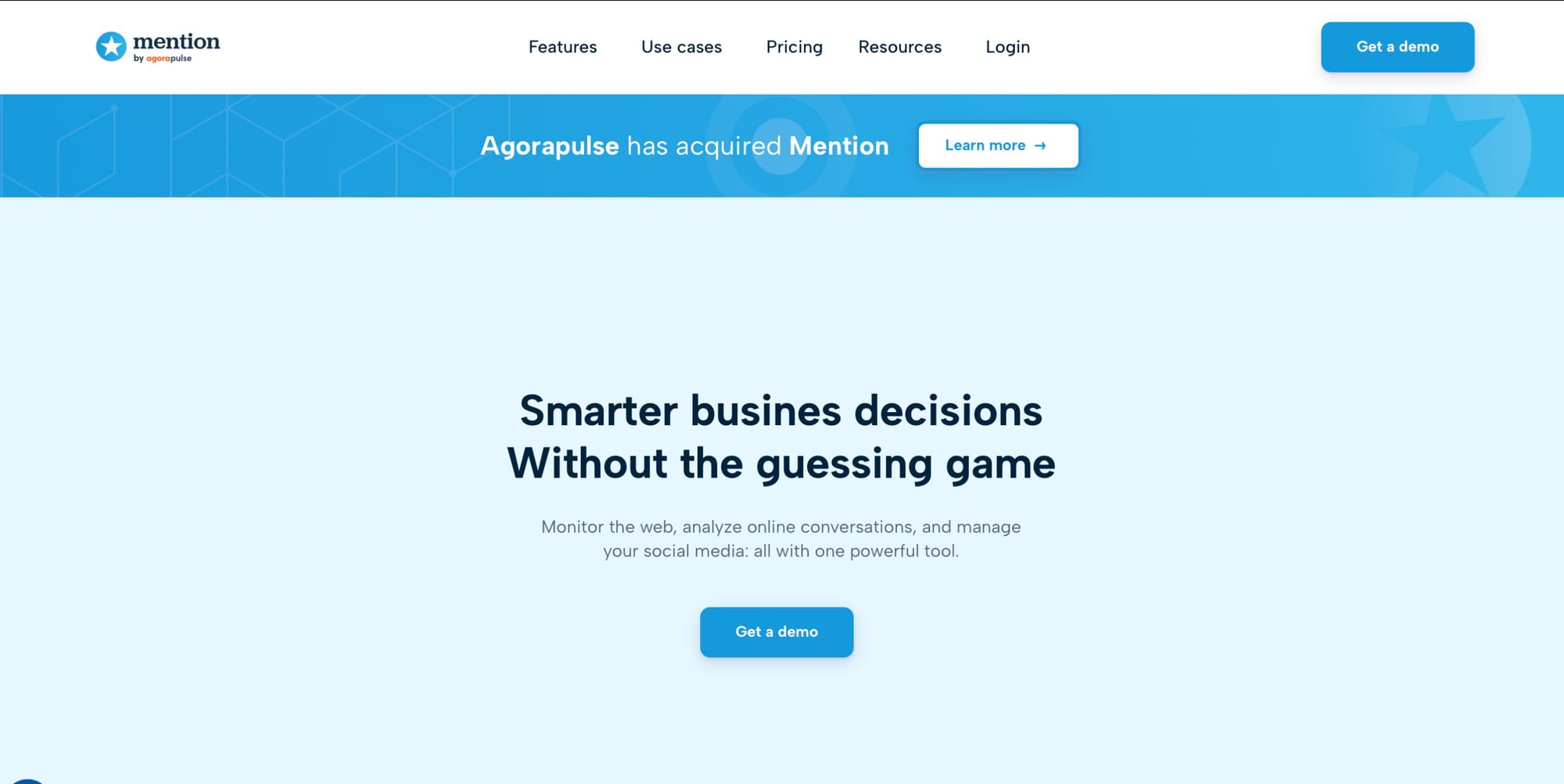
Mention specializes in instant visibility. It monitors brand or keyword mentions across social and web, with real-time updates and Spike Alerts that notify you of sudden changes.
Its Boolean search lets you filter results by language, region, or source, and it can even pull historical mentions from the past two years.
Pros:
- Immediate notifications.
- Historical data analysis.
- Detailed Boolean customization.
Cons:
- Complex setup for beginners.
Best for: PR teams and brands that need quick responses to public conversations.
#10 — Sprout Social
Best for: Large businesses needing enterprise-level intelligence.
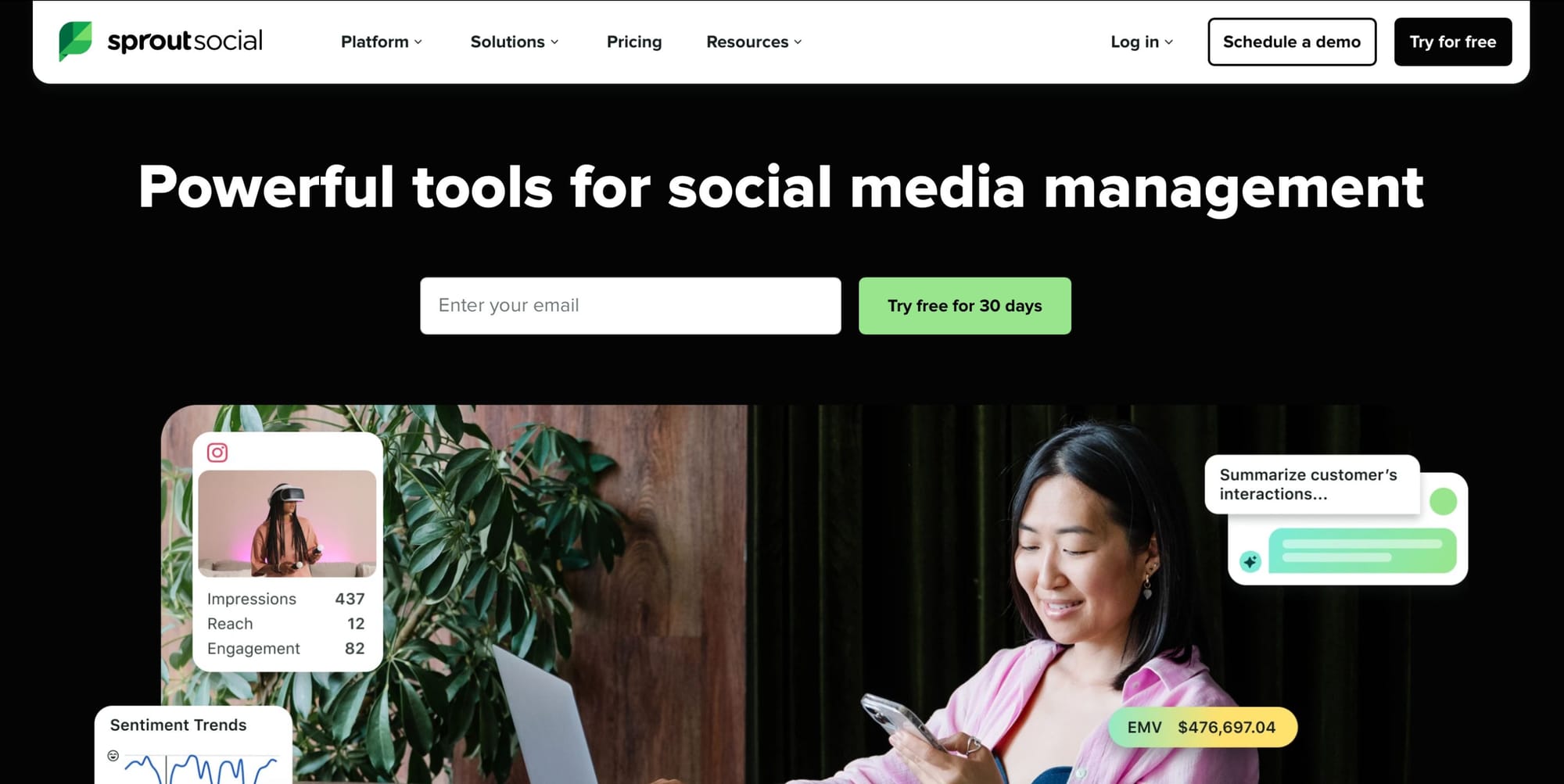
Sprout Social goes beyond monitoring — it’s a complete social ecosystem.
Its AI-powered Listening Module tracks brand health, sentiment, trends, and competitors with remarkable precision. You also get a Smart Inbox, employee advocacy, and social CRM for managing relationships.
Its analytics suite is second to none, but the price reflects that.
Pros:
- Enterprise-grade depth and reporting.
- AI insights and sentiment breakdowns.
- Includes publishing, advocacy, and CRM.
Cons:
- High pricing with per-seat cost.
- Listening is an add-on.
Best for: Enterprises and agencies managing multi-brand portfolios.
#11 — SocialInsider
Best for: Simplicity + AI-powered emotion analytics.
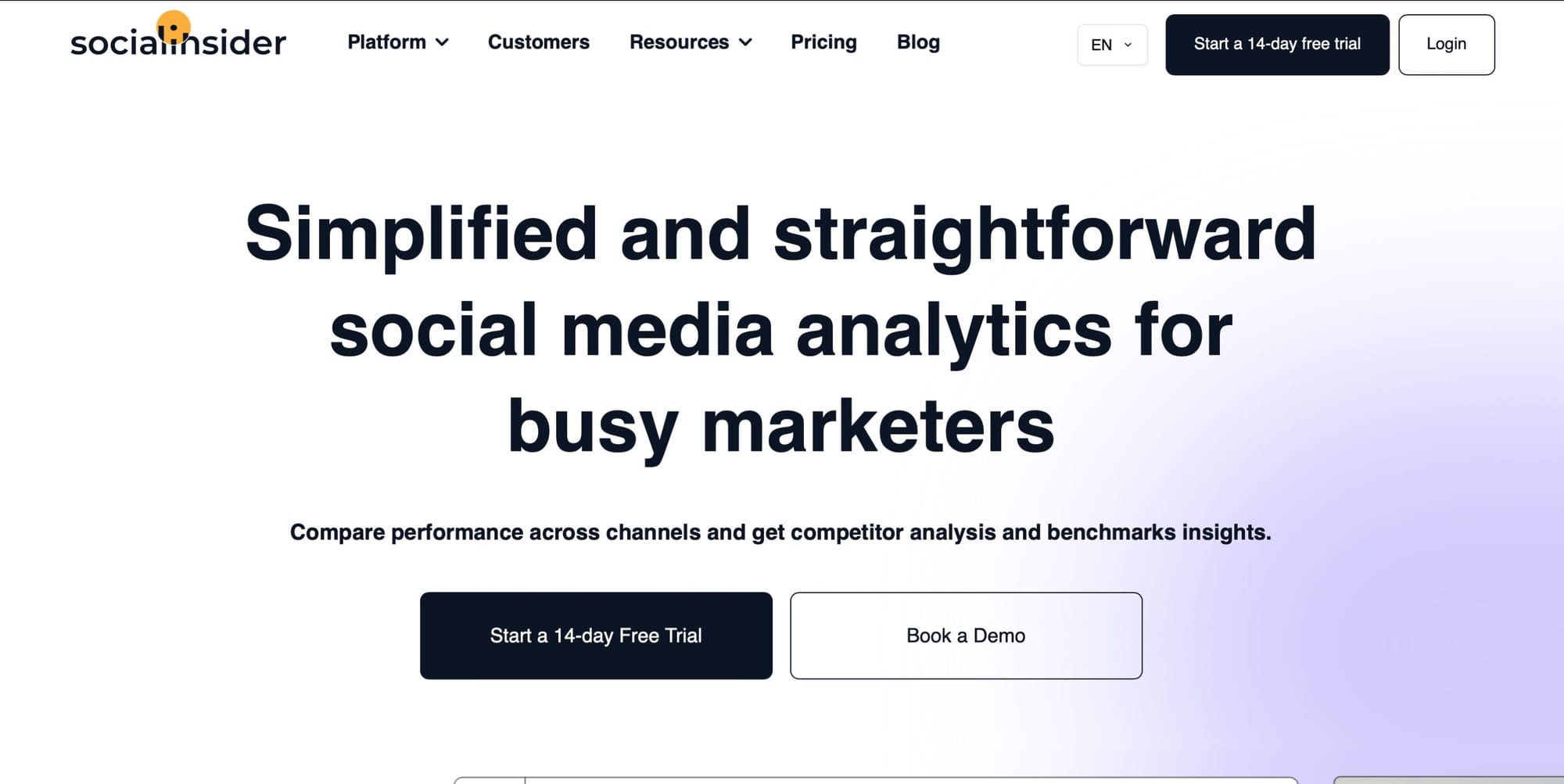
SocialInsider offers an elegant dashboard with essential metrics across networks and adds a twist: emotion analysis.
It doesn’t just measure sentiment — it identifies emotions like joy, anger, or disgust in conversations about your brand.
It’s excellent for competitive benchmarking and trend tracking but limited in scope compared to larger suites.
Pros:
- Simple UI and clear reporting.
- Emotion-based analysis for deeper insights.
- Good for benchmarking.
Cons:
- Listening limited to Instagram.
- Somewhat overpriced for smaller users.
Best for: Analysts and brand teams focused on emotion-driven marketing.
#12 — Talkwalker
Best for: PR professionals and enterprise intelligence.
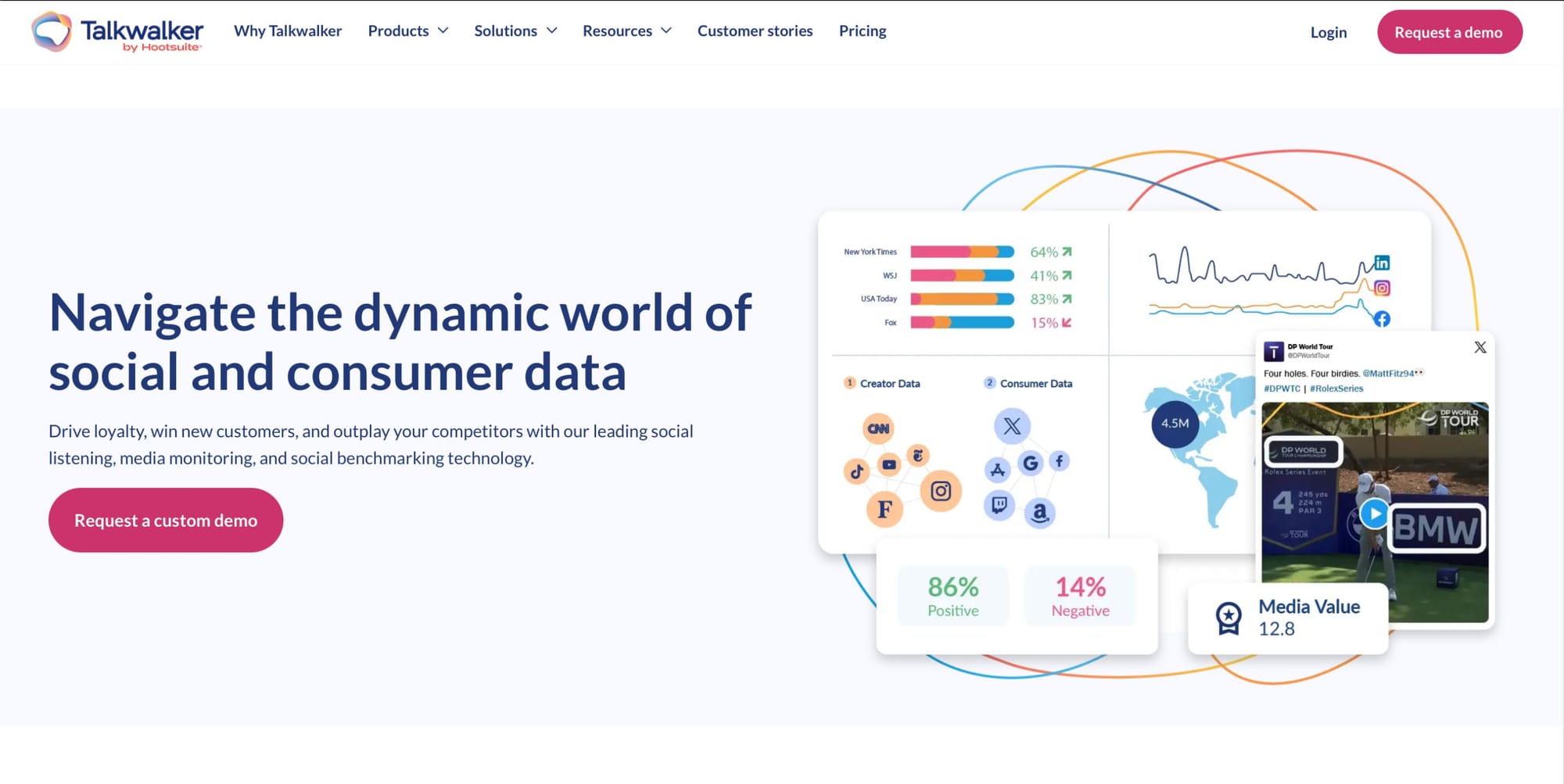
Talkwalker is the most advanced of the bunch — it monitors social media, online media, print, and even broadcast.
It also performs visual listening, identifying your brand in images and videos.
AI summaries transform overwhelming data into readable, actionable insights, and its influencer discovery engine maps key voices in your sector.
Pros:
- Unmatched coverage and accuracy.
- Visual and audio listening.
- Unlimited users on all plans.
Cons:
- Expensive, demo-based pricing.
- Built for enterprise PR, not everyday marketers.
Best for: Enterprises, media agencies, and reputation teams that need every angle.
Final Thoughts
Social monitoring used to be about seeing who mentioned your brand.
In 2026, it’s about knowing who matters — and acting fast.
While many tools track mentions, Circleboom stands out because it monitors humans, not noise. It filters bots, identifies genuine engagement, and connects you to the audiences that actually convert.
That’s intelligent monitoring.
That’s advertising evolution.
Start with Circleboom — where your audience is verified, your engagement is real, and your strategy finally makes sense.



